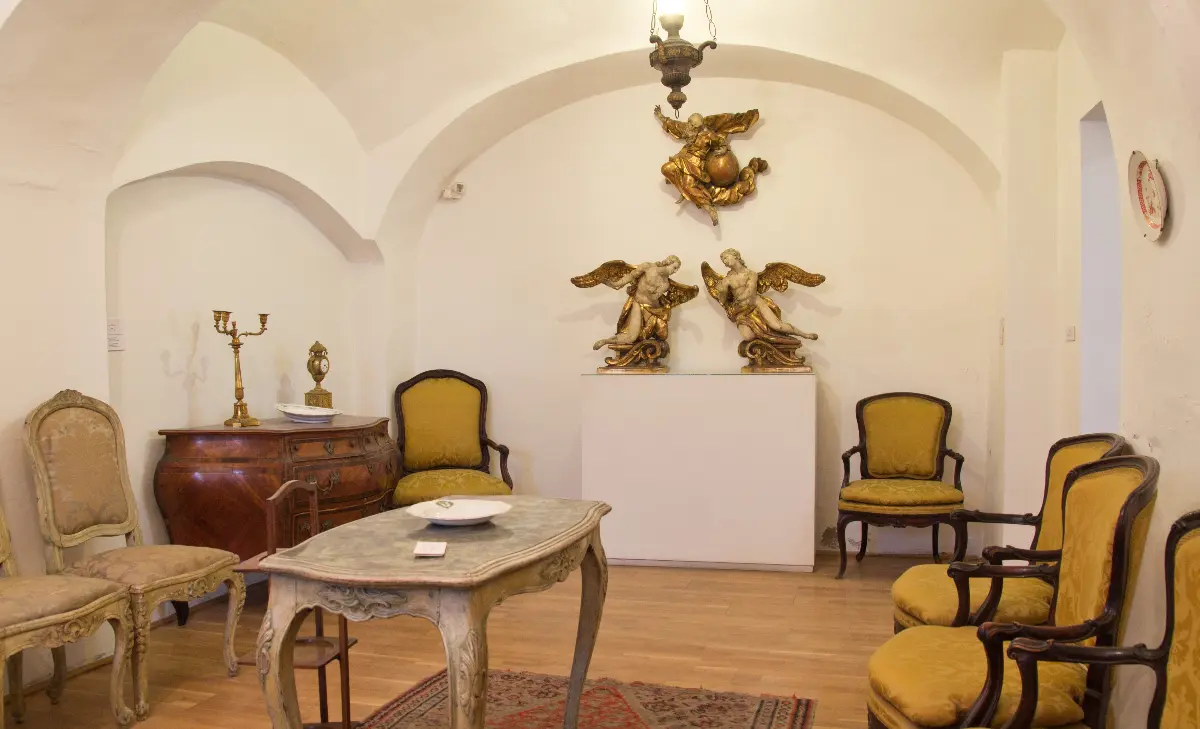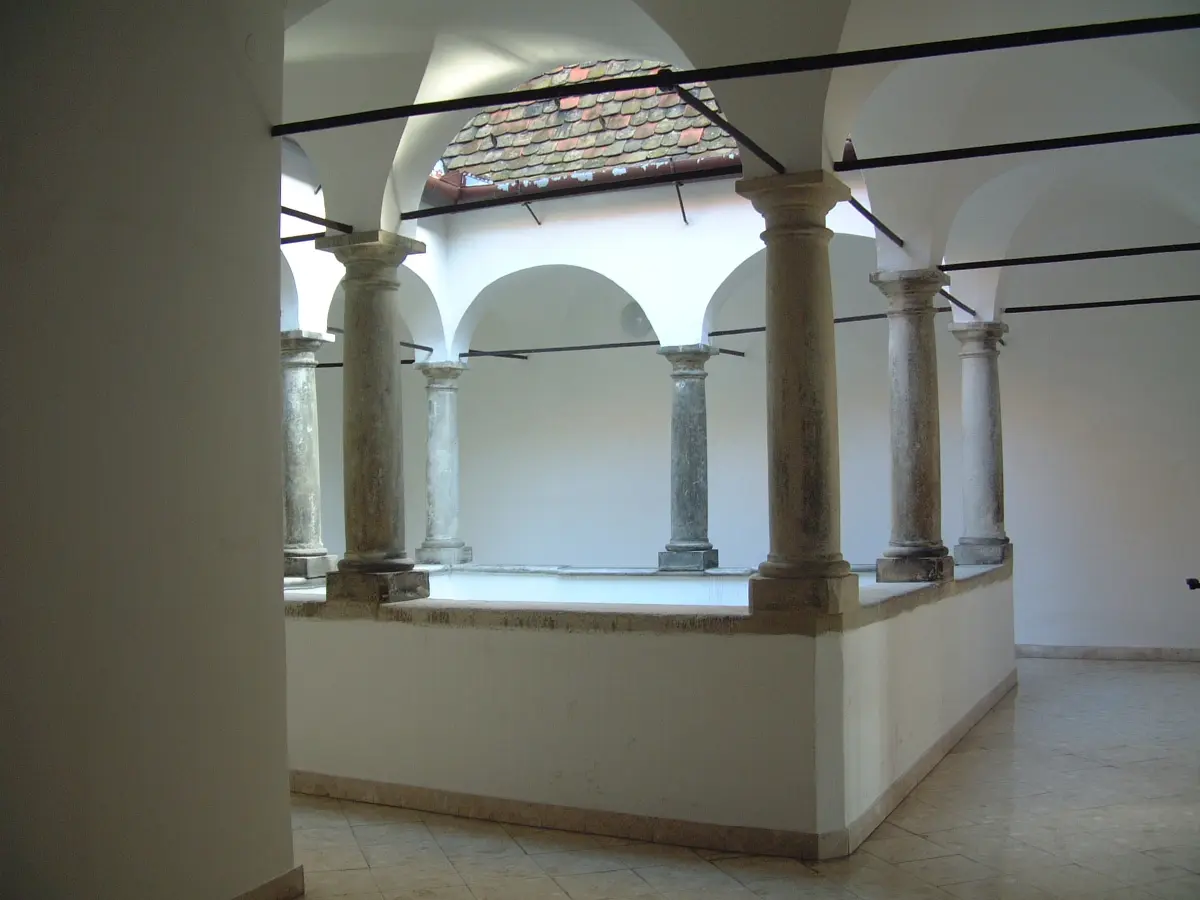
Helyszín címkék:
What was the Hungarian “Ispita” and what is it hiding today?
Bóday Csilla
In the historic city centre of Győr stands a building that for centuries was a shelter for abandoned senior citizens. In 1666, Bishop György Széchenyi established the foundation that maintained and operated the institution, which was actually an “ispotály” (old Hungarian world for hospital), known as the Hungarian “Ispita”, until World War I. The building, of medieval origin, combines several architectural styles: it is largely late Renaissance, as can be seen in the Tuscan arcade of its courtyard, and partly Baroque. In the inner courtyard there is an ornamental fountain sculpture of Miklós Borsos, and in the two housings of the façade there are statues of the Virgin Mary and St Florian. It is worth taking a tour of the building before you see the exhibition, which features Renaissance and Baroque furniture, fine and applied arts.

The historian and art collector donor
Born into a Lutheran Hungarian family in Slovakia, Péter Váczy (1904-1994) was a medieval historian and art collector who studied at Pázmány Péter University, then in Vienna, Paris, Rome, London and Zurich. He had a rich career in public collections, universities and academia, and in 1929 he became an official in the archives department of the Hungarian National Museum, and later a sub-archivist at the Hungarian National Archives. He taught at the University of Budapest, Cluj-Napoca and Pázmány Péter University. The historical events of the time forced him to conduct public collection research. After the change of regime in Hungary in 1989, he regained his former membership of the Academy of Sciences. His areas of interest and research are: the universal European history of the early Middle Ages, the history of the Huns, the prehistory of the Hungarians, the early history of the Hungarian state, and the auxiliary sciences of history. He was also interested in ethnography and music theory. As a scholar of medieval times, he also researched contemporary artefacts, including a book on the Flemish weaving industry, published in French. He left his fine and applied art collection to the museum to the Hungarian “Ispita” in Győr.
The exhibited objects
The main asset of the Dr. Péter Váczy Collection, selected with excellent taste, is the extraordinary wealth of Western European and Hungarian furniture from the 16th–18th centuries, including a wide range of sideboards and wardrobes, travelling chests, writing and console tables, arm and back chairs with various upholstery. From the previous historical periods, there are some Greek and Roman and medieval Hungarian archaeological relics, a Chinese terracotta soldier's tomb with three mosaics, 19th century oriental carpets, glass, silver and bronze objects, Chinese porcelain, chandeliers, wall brackets.
The most unique pieces

The Dr. Péter Váczy collection is largely made up of pieces evoking domestic culture, the youngest piece being a 19th century Napoleonic Empire-style gilded clock. The characteristic of this style is that it beautifully revives elements of ancient Roman and Greek art and incorporates them into the culture of the era. A Hungarian mirror made at the end of the 17th century, representative of the Baroque style, also follows the line of the gilded mirrors owned by the wealthy. The decoration of the mirror has gone so far beyond its function that it can almost be seen as a work of art. An interesting feature of the mirror is that it is completely flat. Two porcelain bowls from China, dating around the 15th–17th centuries. While in Hungary, porcelain bowls were seen as decorative objects, in China they were and still are considered everyday utensils. Among the bowls on display in the museum, one is a simple hand washing bowl decorated with seasonal motifs, and the other is a fruit bowl with authentic Chinese motifs. European art also adopted the style of painting bowls to depict everyday events, and even blue painting. You can also find here faience vases from Europe, dating back to the 18th century, which also show Chinese influence.









